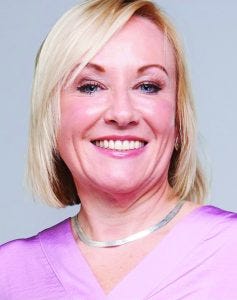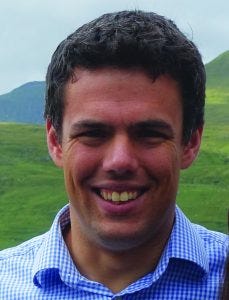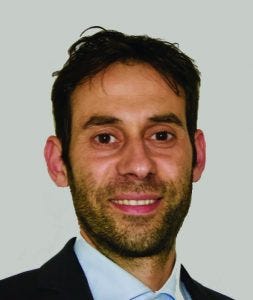- Sponsored Content
- Vaccines
Process Intensification of Viral-Based Vaccines: Where Are the Bottlenecks?Process Intensification of Viral-Based Vaccines: Where Are the Bottlenecks?
Sponsored by Sartorius

Sue Pearson is an international science writer for the biotechnology, life sciences, and pharmaceutical industries.
In the current coronavirus pandemic, the ability to scale up and produce viral-based vaccines (attenuated viral vaccines, inactivated viral vaccines, and viral vector vaccines) quickly and in large quantities has never before been more relevant. For viral-based vaccines that can be produced by adherent or suspension cell culture, process intensification — in which cell culture, for example, is optimized to produce higher viral titers using the same process equipment — offers a strategy to produce larger numbers of doses in smaller production facilities worldwide, thus reducing overall cost. But what’s stopping researchers from doing this, and what technologies should they be developing to make process intensification a reality?
Science writer Sue Pearson spoke with vaccine experts Sandy Douglas, Piergiuseppe Nestola, Cristina Peixoto, António Roldāo, and Ricardo Silva to find out what intensified processing offers, where they perceive the bottlenecks are with this approach, and what improvements are needed.
The Value of Intensified Bioprocessing
Pearson: Why should developers of viral-based vaccines consider process intensification?

Alexander (Sandy) Douglas, University of Oxford, UK
Douglas: Process intensification can allow the use of smaller bioreactors than otherwise would be used. For example, we have been working on a manufacturing process to produce our coronavirus vaccine candidate at high volumetric yields, targeting yields in the range of 1–10 million doses per batch from 200–2,000-L bioreactors.
Nestola: Process intensification can help improve cost per dose. This is because intensification improves the overall manufacturing yield of viral-based vaccines. However, process intensification not only achieves higher titer and high cell density upstream, but also improves downstream capacity, maximizing facility output and increasing overall process efficiency. It also ensures that we can develop vaccines during a pandemic such as what we are facing now with coronavirus because intensification will lead to rapid production of doses required for mass vaccination campaigns within smaller (such as pilot-scale–size) facilities.
That is important because vaccines require long phase 3 trials, for which manufacturers must produce a large number of doses without knowing whether a vaccine is going to be efficacious and whether it will make it to market. They therefore need a flexible manufacturing platform. Phase 2 trials will demonstrate immunogenicity only and can show only whether partial protection is achieved.

Piergiuseppe Nestola, Sartorius Stedim Biotech, Zug, Switzerland
For phase 3 trials, manufacturers have to scale up production or move to a new facility to produce the 20,000–30,000 doses normally required for a phase 3 trial. Using intensified processing means that a pilot facility could provide all the material required for a phase 3 trial and even for commercial launch. That mitigates the risk of building a facility that would not be used if the vaccine fails in phase 3. This is unlike a phase 3 trial for a MAb (monoclonal antibody) therapy, for which the patient population is smaller — and this is a major difference between MAb and vaccine clinical studies and manufacturing. The coronavirus pandemic is also a special situation in which some clinical trials might be skipped or accelerated, creating the need for thousands or even millions of doses to be made available quickly.
Pearson: What are the unique challenges in trying to intensify cell culture for viral-vaccine production?
Douglas: Selection of a cell line that supports high cell-specific yields is a critical task. For rapid development of viral vector vaccines against a previously unknown pathogen, it is helpful to ensure that yields will be independent of any effect of the transgene antigen on viral productivity.

António Roldāo, iBET (Instituto de Biologia Experimental e Tecnológica), Portugal
Roldāo: Selecting the right expression system is important and depends on the type of vaccine. For an antigen-presenting vaccine, for example, a mammalian- or insect-cell expression system would be the best choice. With coronavirus, Sanofi is using a baculovirus expression-vector system (BEVS) similar to the one used for its influenza vaccine, for example.
Nestola: Cell lines are a major challenge in intensified processing because some cell lines and clones perform better in intensified processing than others do. Additionally, there is a lot of information about how to intensify the CHO (Chinese hamster ovary) cell line, but it is not the expression system of choice for many viral-based vaccine products. The process also is different because cells need to be infected with virus, and the entire virus or the viral proteins are generally what are being purified for use as the vaccine. For example, if process conditions are not monitored closely and controlled, and there is a slight difference in pH, oxygen, or temperature between batches, that could affect a virus’s ability to infect cells and reduce virus titer, even with high cell densities.
Pearson: What’s available currently to improve upstream process intensification, and what else is required?
Douglas: Clearly, methods of running upstream process conditions in parallel at small scale are desirable. It is difficult in an academic environment to perform full DoE (design of experiments) optimization of our cell lines and media. We still use shake flasks for that, but we would like to use instrumentation such as the ambr bioreactor system. The opportunity for short-term access to such a system, either through a rental or development service, could be useful for process intensification.
Roldāo: Perfusion cultures do produce viral-based vaccines at high cell densities. However, we need media compositions that are designed for such processes.
Douglas: We have seen significant benefits from modern media formulations. We believe we’re not at the limits of what our cells can do, and we could increase our cell and viral productivity even further using perfusion culture.
Nestola: An increasing number of suppliers now offer a range of technologies for upstream process intensification. Intensified processes for vaccine production can be adapted from MAb-based and insulin production protocols, lessening overall risks. Additionally, we now have high-throughput process development tools to perform perfusion optimization at small scale using, for example, the ambr system. In larger-scale bioreactors, good process control with process analytical technology (PAT) tools is essential to keep control of conditions such as pH between batches. Technologies such as the BioPAT ViaMass measurement solution and the BioPAT Spectro probe integrated with a Raman spectrometer can monitor and control setpoint (feed control and bleed control) and event time-point predictions (harvest and infection) as well as provide timely identification of process deviations. On-line conditions for cell growth and infection in Biostat STR bioreactors then can be analyzed using SIMCA multivariate data analysis (MVDA) software to analyze the data from the sensors. That provides a summary of a range of process information, key trends, correlations, and patterns all in one convenient data model, permitting faster troubleshooting.
Pearson: At harvest and clarification, what challenges do you face with intensified processing, and how could those be overcome?
Nestola: The virus titers produced can increase in intensified processing, but the impurity levels including DNA and protein debris also might increase, requiring additional purification steps — which can increase cost of goods (COG) and lower yields. Not enough technologies are yet in place to cope with high cell densities, and there always is a trade-off between yield and impurities in intensified processing of viral vaccines.

Cristina Peixoto, iBET (Instituto de Biologia Experimental e Tecnológica), Portugal
Peixoto: Downstream is where the real bottlenecks occur. High cell densities require removal of more DNA to purify a viral vaccine. The most common option is to use nuclease enzymes before filtration, but this is an expensive strategy, so everyone is looking for alternatives to reduce the amount used. Another option is to use large-area filters in downstream purification, but this requires buffer and a larger footprint.
Douglas: At Oxford, we generally haven’t had huge problems with harvest and clarification. We would be interested to explore alternative nucleases, but in our process, the cost of nuclease per dose of vaccine is quite low, and we have quite a simple, effective depth-filtration step with good product recovery. The main challenges we see occur downstream of clarification.
Nestola: With lytic viruses such as adenovirus in production of some coronavirus vaccines, we can use flocculants and then centrifuge with the kSep single-use centrifugation system, for example, to sediment everything down before using nucleases. Filters with low specific absorption such as Sartopure PP3 prefilters also could be used for clarification because many viruses won’t adsorb to them.
When low filter capacity is observed, high-capacity Sartoclear filters also can be used. But because of their high positive charge, operating conditions such as pH and salt have to be fine-tuned to prevent virus adsorption at this stage. There is no plug-and-play solution currently for all viral vaccines. Scientists need to test different flocculants and filters to find the right ones for use in their intensified processes.
Pearson: What other solutions are available downstream?

Ricardo Silva, iBET (Instituto de Biologia Experimental e Tecnológica), Portugal
Silva: Fast production is now a major driver, and reducing the amount of buffer could be critical for manufacturing in smaller-sized facilities. In intensified processing, buffer costs can become expensive if large amounts have to be used. It’s crucial to reduce the number of operations and therefore the cost of materials and the cost of the final formulation. Purification from intensified cell culture can require multiple chromatography steps, but that can decrease yield. Some good work is going on in developing chromatography media originally designed for purification of small MAbs (<100 KDa), and that looks promising for purification of viral vaccines.
Peixoto: Analytics can be a bottleneck too. We need a high-throughput method of measuring viral titer and of detecting product quality during the purification steps to optimize parameters.
Nestola: The lack of good, real-time analytics to help with measuring outlet and inlet virus concentration and quality is a pain point in downstream purification. This is an area that Sartorius’s PAT team is willing to investigate further.
Douglas: Optimizing tangential-flow filtration (TFF) processes at small scale remains difficult in an academic context. More accessible parallel scale-down TFF testing methods would be useful, especially with good predictivity of larger-scale performance. I agree with the other points regarding analytics and buffer volumes. Buffer volumes are a particular issue for our team at Oxford because the viral titer from our upstream process is relatively close to the titer at which product aggregation can become problematic, limiting the amount by which we can concentrate the product downstream.
Pearson: What other factors need to be considered for intensified processing?
Douglas: As is often the case in science, there are more possibilities than there is time to explore them. Application of economic modeling to identify which process improvements could deliver maximum cost benefits would be valuable in targeting practical efforts.
Nestola: When developing high-titer viral vaccines, it is important to select the right buffer formulations for purification. Small-scale systems such as the ambr crossflow benchtop system allow scientists to perform high-throughput buffer screening.
Silva: Diafiltration methods with optimized materials and cutoffs that are irradiated and ready to use to produce phase 1 and phase 2 materials are needed. Also, not enough polishing solutions are available for viral vaccines from intensified processes.
In an ideal world, we envision a fully closed process for downstream purification of viral vaccines that could be run in a small room. But because there is currently no fully integrated system, scientists still need to find the right purification methods and connect them together themselves for successful intensified processing.
Corresponding author Sue Pearson, PhD, is a science writer at International Science Writer; [email protected];
44-1462-635-327. Alexander (Sandy) Douglas, DPhil, is a principal investigator at the Nuffield Department of Medicine in the Jenner Institute at the University of Oxford, UK, where he works on developing efficient and scalable vaccine manufacturing processes. He is part of the team developing the University of Oxford’s ChAdOx1 adenovirus-vectored candidate vaccine against COVID-19. Piergiuseppe Nestola, PhD, is a global vaccines technology consultant at Sartorius, where he is responsible for providing scientific leadership and identifying the best technologies and processes for vaccine production. Cristina Peixoto, PhD, is head of the downstream process development laboratory at iBET (Instituto de Biologia Experimental e Tecnológica) in Oeiras, Portugal, where she coordinates development of new purification trains for viral-based biopharmaceuticals and their technology transfer to GMP facilities. António Roldāo, PhD, is head of the cell‑based vaccines development laboratory at iBET, where he works on upstream processing particularly of virus-like particle (VLP)-based vaccines against infectious diseases. Ricardo Silva, PhD, is a senior scientist at iBET, where he is involved in downstream process development of vaccines and gene therapy vectors.
You May Also Like






